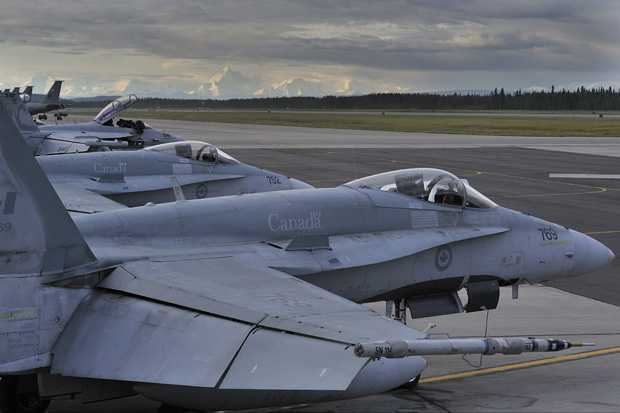When the first plane hit the World Trade Center in New York, people inside the Air Force’s Winnipeg headquarters didn’t think it was for real.

NORAD was in the middle of a training exercise on September 11, 2001, said Major General Alain Parent, Commander of 1 Canadian Air Division and Canadian NORAD region. At the time, he was the director of the Canadian Air Operations Centre in Winnipeg, in charge of maintaining a clear picture of aerospace defence in Canada and coordinating air force assets across the country.
The attack occurred in the middle of the exercise. Parent saw the strike on a big screen as he walked into the operations centre that morning. He didn’t believe what he saw.
“It was so surreal and unreal that I didn’t believe it was actually happening. I thought it was part of an exercise scenario that they had done – that they had gone all out with some sort of Hollywood production,” he said.
But by the time the second plane struck, it was clear that this was not part of the exercise. “So then I had goosebumps and we said, this is going to be very serious and we have to change the mindset from exercise mode to reality,” he said.
First, he briefed the commander. Then, “I kicked everyone out of the air operations centre, lined them up outside and reinserted them in the headquarters in battle stations so that we could start taking care of business as soon as possible,” he said.
There was a lot of business to take care of. According to Transport Canada, there were 224 diverted planes and more than 33,000 displaced passengers to coordinate.

Get daily National news
“We ordered our fighter bases to gather every serviceable CF-18 and every air crew they had, mount up the weapons that would be required potentially on the aircraft and make sure they would be ready to respond to any subsequent events,” said Parent.
There were at least three suspicious aircraft over Canadian territory: Korean Airlines Flight 85 which eventually landed in Whitehorse, Northwest Airlines Flight 51 which landed in Hamilton and China Air Flight 985 which landed in Vancouver.
The Korean Airlines incident is the most well-known. “That aircraft created a lot of confusion,” said Parent. It was approaching North America along the polar route, when a communications mixup caused the pilot to broadcast a “hijack” code – an emergency transmission to alert that the plane may be experiencing a hijack.
“That got us very worried and very concerned. We could not permit that aircraft, with that reaction, to go to its destination and overfly a population centre,” he said.
American F-15 fighters from Alaska were dispatched to escort the flight, and it was determined that although the plane was broadcasting a hijack code, it was obeying commands. This saved it from further escalation of response – which could have gone all the way to shooting it down, if the government gave permission.
The flight landed in Whitehorse and was met by the RCMP on the ground.
The flight to Hamilton failed to comply with instructions and was deemed a possible threat, until it followed the directive to land. The flight to Vancouver was escorted in by U.S. fighters after reporting suspicious behaviour, according to a document provided to Global News by the Canadian Forces.
If such an incident were to happen today, said Parent, the Canadian Forces would be ready. “I have full confidence in our level of preparedness right now,” he said.
Timeline of the Canadian Forces’ actions from September 11-13, 2001. Document from the Department of National Defence. All times GMT.







Comments